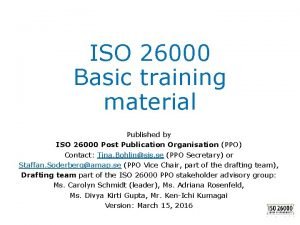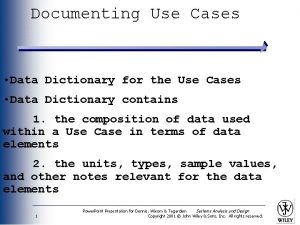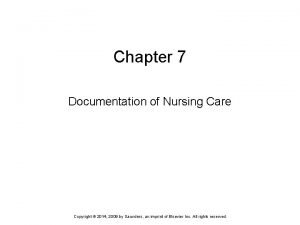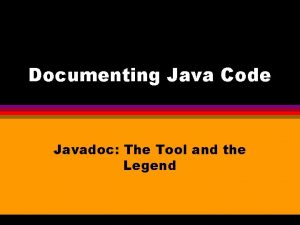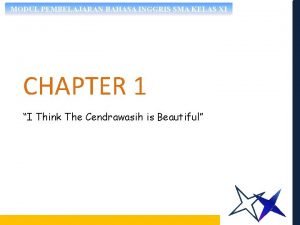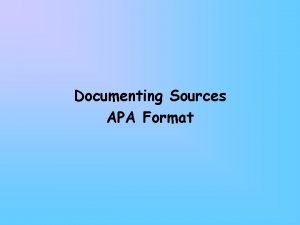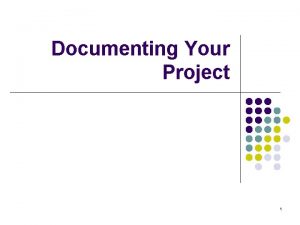Activity Activity Definition identifying and documenting specific activities
















- Slides: 16

Activity • Activity Definition: identifying and documenting specific activities to produce project deliverables identified in the WBS • Must be defined to meet the project objectives

Activity Definition Inputs • • • WBS – primary input Scope Statement – project justification & project objectives Historical Information Constraints Assumptions

Activity Definition Tools & Techniques • Decomposition – outputs are expressed as activities rather than deliverables • Templates – reuse from previous projects

Activity Definition Outputs • Activity List – all to be performed; extension to the WBS and includes description to ensure team members understand work to be performed • Supporting Detail – organized as needed and include all assumptions and constraints • WBS Updates – identify missing deliverables and clarify deliverable descriptions. WBS updates often called refinements; more likely using new technologies in project

Activity Sequencing • Activity Sequencing – identifying and documenting interactive dependencies among activities. Support later development of a realistic schedule • Project Management software often used

Activity Sequencing Inputs: • Activity List • Product Description – product characteristics often affect activity sequencing • Mandatory Sequencing – physical limitations, hard logic, prototypes needed; inherent in nature of work being done • Discretionary Dependencies – defined by project management team; “best practices” or unusual aspects of project – soft logic, preferred logic, preferential logic • External Dependencies – relationship between project activities and non-project activities (company policies, procurement, etc. ) • Constraints • Assumptions

Network Diagram • Network Diagrams • Shows how the project tasks will flow from beginning to end • Proves how long the project will take to complete • Takes project tasks from low levels of WBS and placing them into their order of completion (beginning to end)

Activity Sequencing Tools & Techniques • Precedence Diagramming Method (PDM) – constructing network diagram using nodes to represent activities and arrows to indicate dependencies; also called Activity On Node (AON)

Activity Sequencing Tools & Techniques (continued) • Arrow Diagramming Method (ADM) – uses arrows to represent activities and connecting at nodes to illustrate dependencies • Also called Activity On Arrow (AOA) • Only uses finish to start dependencies • PERT and CPM only can be drawn using AOA

Activity Sequencing Tools & Techniques (continued) • Conditional diagramming methods • GERT (Graphical Evaluation and Review Technique) • System Dynamic Models • Allow for non-sequential activities (loops) or conditional branches – not provided by PDM or ADM methods

Activity Sequencing Tools & Techniques (continued) • Network Templates – standardized networks can be used. Composed of subnets, or fragnets • Subnets are several nearly identical portions of a network (floors on a building, clinical trials, program modules) • Useful for several identical processes (clinical trials, programming modules).

Activity Sequencing Outputs: • Project Network Diagram – schematic display of project activities and relationships (dependencies). Should be accompanied by a summary narrative that describes the diagram approach • Activity List Updates

Activity Duration Estimating • Involves assessing number of work periods needed to complete identified activities • Requires consideration of elapsed time, calendars, weekends, and day of week work starts

Activity Duration Estimating Inputs: Activity Lists Constraints Assumptions Resource Requirements – amount of labor assigned to activity • Resource Capabilities – human and material resources, expertise • Historical Information • • • Project Files, or records of previous project results • Commercial Duration Estimates – useful when durations are not driven by actual work (approval periods, material resources) • Project Team Knowledge

Activity Duration Estimating Tools & Techniques • Expert Judgment – guided by historical information should be used whenever possible; high risk without expertise avail. • Simulation – using different sets of assumptions (Monte Carlo Analysis) to drive multiple durations • Analogous Estimating – “top down estimating” – use actual, similar, previous known durations as basis for future activity duration. Used when limited knowledge is available. Form of expert judgment

Activity Duration Outputs: • Activity Duration Estimates – quantitative assessments of work periods to complete an activity. Should indicate a range +/- of possible results • Basis of Estimates – all assumptions should be documented • Activity List Updates
 Identifying and non identifying adjective clauses
Identifying and non identifying adjective clauses Non identifying adjective clauses examples
Non identifying adjective clauses examples Identifying and non identifying adjective clauses
Identifying and non identifying adjective clauses Understanding and documenting iso 26000 training
Understanding and documenting iso 26000 training Identifying similarities and differences examples
Identifying similarities and differences examples Documenting use cases
Documenting use cases Documentation of nursing care chapter 7
Documentation of nursing care chapter 7 Week by week plans for documenting children's development
Week by week plans for documenting children's development Documenting maine jewry
Documenting maine jewry Documenting java code
Documenting java code Indoor or outdoor sports
Indoor or outdoor sports Primary and support activities
Primary and support activities Primary activities and secondary activities
Primary activities and secondary activities Specific weight
Specific weight Applications of specific gravity
Applications of specific gravity 03 activity 1
03 activity 1 Activity 5 bahasa inggris kelas 11
Activity 5 bahasa inggris kelas 11



